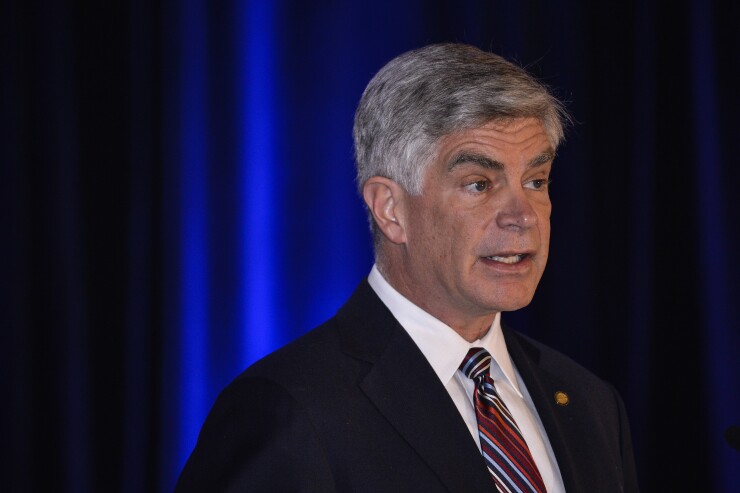Federal Reserve Bank of Philadelphia President Patrick Harker wants the central bank to take its time in hiking to avoid inverting the yield curve.
“It’s just a question of timing: for me, my forecast right now” is “three this year, two next year, two year after,” he told Bloomberg Television in an interview, adding that because he’s not seen an acceleration in inflation, “I don’t think we need to rush the normalization process.”

The U.S. central bank raised rates last week for the third time in 2018 and penciled in another move before year-end, based on an upbeat outlook for the economy that has unemployment staying low with inflation around its 2% target. Investors see a 70% chance the Fed will act at its December meeting.
“What do you accomplish by going sooner rather than later? Right now, I think there’s good news in the economy,” said Harker. “There’s some risk, I continue to worry about, with the yield curve — an inversion of the yield curve. I’d like to avoid that risk. So I’d just like to slow the pace.”
An inverted yield curve, when short-term yields rise above the returns on longer-term bonds, is seen by many investors as a reliable early warning signal.
It has preceded every U.S. economic recession in the past 50 years. And while the U.S. Treasury yield curve has not inverted, it has flattened. In August, the 10-year maturity’s yield premium over 2-year notes shrank to the narrowest since 2007.
Thomas Barkin, president of the Richmond Fed also speaking Wednesday morning, said he supported a path of gradual rate hikes but also cited the yield curve among the risks he was monitoring.
“Currently, many people are concerned about the compression of the spread between 2-year and 10-year Treasuries,” he told an audience in Charleston, W.Va. “I respect the 2-year/10-year spread as a signal. That said, I’m not inherently inclined to blindly follow the market’s lead.”
He also cautioned that uncertainty over trade disputes were making businesses more edgy than they had a few months ago, a sentiment that Harker shared.
“People pausing a little bit on capital expenditure, just trying to let that uncertainty resolve itself. That, I think, is a concern,” Harker said.





